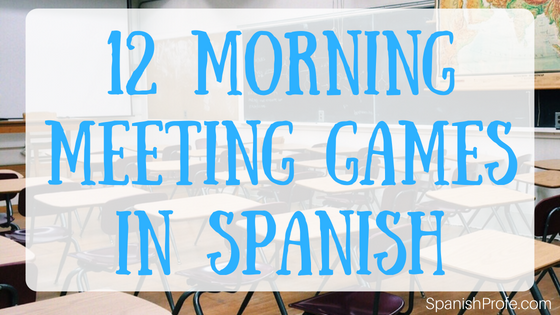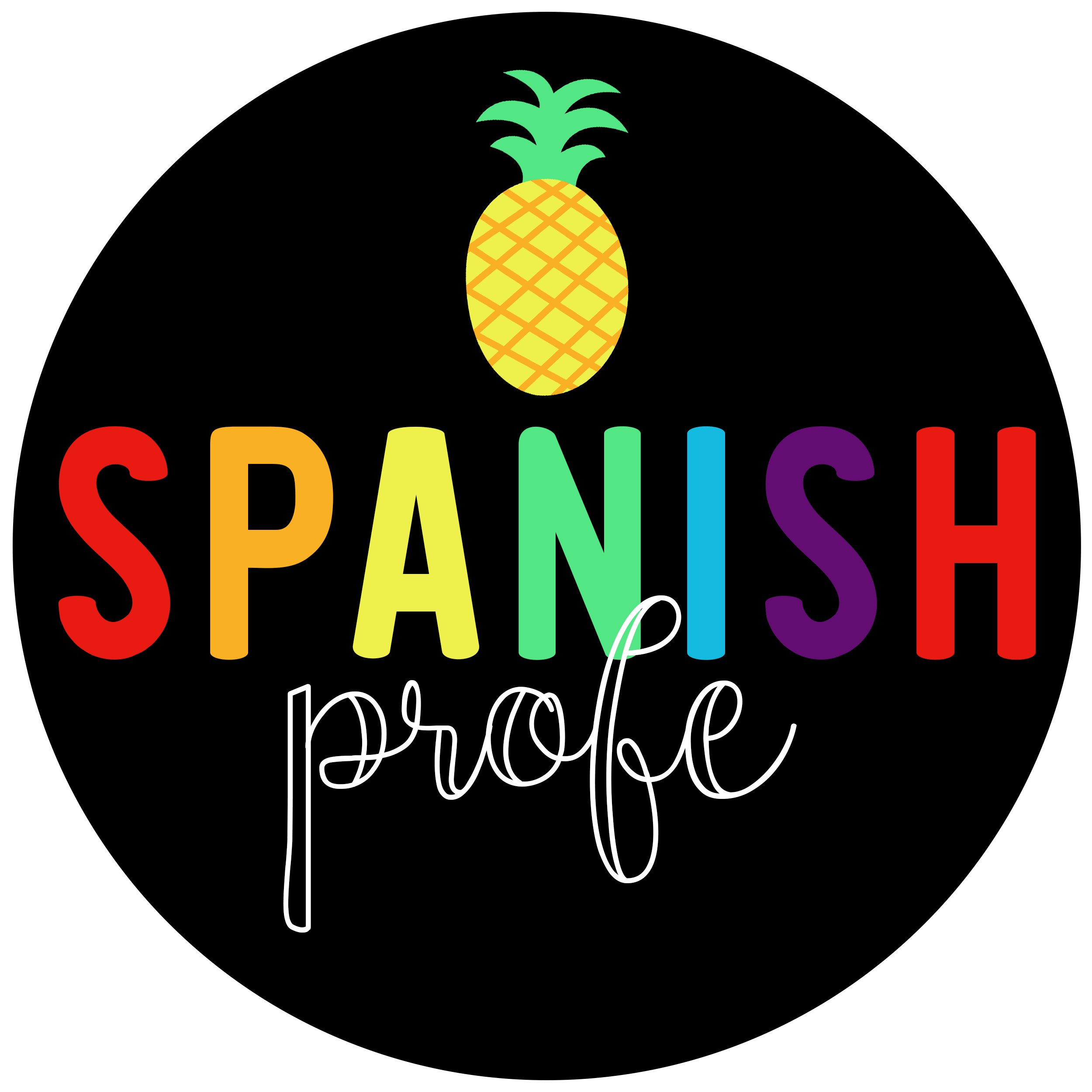An important way to build relationships in your classroom is with a morning meeting. One of the components of morning meeting is a “game.” As a Spanish immersion teacher, I am always looking for easy, quick games that can be used during this portion of the day. I often use equity sticks and let the child’s stick that I choose pull, decide the game for that day. Or you could assign one game to each day of the week to ensure a variety of games are played throughout our morning meetings.
Here is a list and a short description of 12-morning meeting games in Spanish.
1. ¿Quién soy yo?
Students sit in a circle. One student goes to the middle of the circle and covers their eyes. Teacher silently chooses a “secret” student to say “Buenos días”. The student in the middle uncovers their eyes and gets to guess three times who greeted them.
2. Noche en el museo.
One person is ‘it’. They go into the hall or cover eyes and count to 20. Students must be statutes or freeze. If the person that is it sees them move they are out. As the museum guard or person that is ‘it’ walks through the statutes can move when the guard is not looking. We usually play for a few minutes and sometimes do a second round it time permits.
3. 4 Esquinas
Assign each corner or Wall of the room with a Word… it could be random words like colors, seasons or animals or vocabulary related to a unit of study. One person that is it counts to 20 and students move silently to the corner/wall of their choice. The person calls a corner and everyone in the corner is out. Play the game until only one person is left.
4. Silla de la risa
One student sits in a chair in the middle of the circle. Students take turns trying to make the student in the ‘silla de la risa’ laugh. Students might need reminders to keep their vocabulary school appropriate depending on age group.
5. Patrón secreto
One person leaves the room. A secret leader is chosen and starts making movements or patterns with their hands. For example clap, tap head, shrug shoulders, etc. The rest of the class follows the secret leader without trying to look at them directly. The guesser stands in the middle and gets to guess who the secret leader is three times.
6. 20 preguntas
Think of a secret person in class/school or an animal. Have students ask yes/no questions about the secret person/animal. If students ask 20 questions and haven’t guessed/identified the secret thing than they lose.
7. ¿Cuál es la regla?
Teacher (or student) thinks of a secret rule about the students in the class… For example: has hair in a ponytail, wearing black pants, has blue eyes, etc. Teacher calls a few students 3-5 that follow the rule to stand in front of the class. Students that are not chosen to stand in front take turns guessing what the rule is. If the class has a hard time guessing the rule, I try to call 1 to 2 more people up that follow the rule.
8. Pulgares arriba./ 7 arriba.
Students sit at their desks/tables. Choose seven people to be in front. The people in front say ‘Cabezas abajo. Pulgares arriba.” The seven people go around and tap one person’s finger. Once all seven have tapped the students whose thumbs were tapped guess who tapped their thumb. They get one guess. If they aren’t correct the person that chose them stays in the game for the next round.
9. Ranita/”Frogger”
Similar to the ‘Patrón secreto’ game, one person goes out of the classroom and comes back as the detective. Have everyone close their eyes and tap one student on the head or shoulder. The secret frogger or ‘ranita’ sticks their tongue out at people and the person freezes. They can fall down or make a funny face but need to stay frozen. The detective stands in the middle and tries to guess who the secret ‘ranita’ is.
10. Vamos en un picnic
Teacher or student chooses a rule or category. For example: vegetables, white foods, salty foods, cold foods, etc. Students take turns asking if they can bring something to the (imaginary) picnic. ¿Puedo llevar ________? The teacher/student that knows the secret rule or category says Si/No. After several people are ‘going on the picnic,’ have students guess the secret rule.
11. Veo. Veo.
Traditional ‘I spy game’ in Spanish. Teacher or Student finds something and says, ‘Veo, Veo’. The rest of the class responds, ¿Qué ves?. The person responds ‘Una cosa’. The class chorally responds ‘¿Qué cosa?. The person than describes the object in Spanish using as many details as possible. For example, ‘Es algo grande. Es un rectángulo. Es blanco y negro. Está en la pared.” Than the teacher or student can call on three students to guess what object the person is describing. With lower level students or those new to Spanish they could walk to the object and point to it and say ‘¿Es eso?’ if they do not know the name of the object.
12. Pelota Silenciosa.
Students toss a small ball to each other. Once a student drops the ball or speaks than they are out. The last person in is the winner.
Hopefully, you found a game or two that you could try during your class’s morning meeting. Do you have a favorite game that wasn’t mentioned? Let us know.










